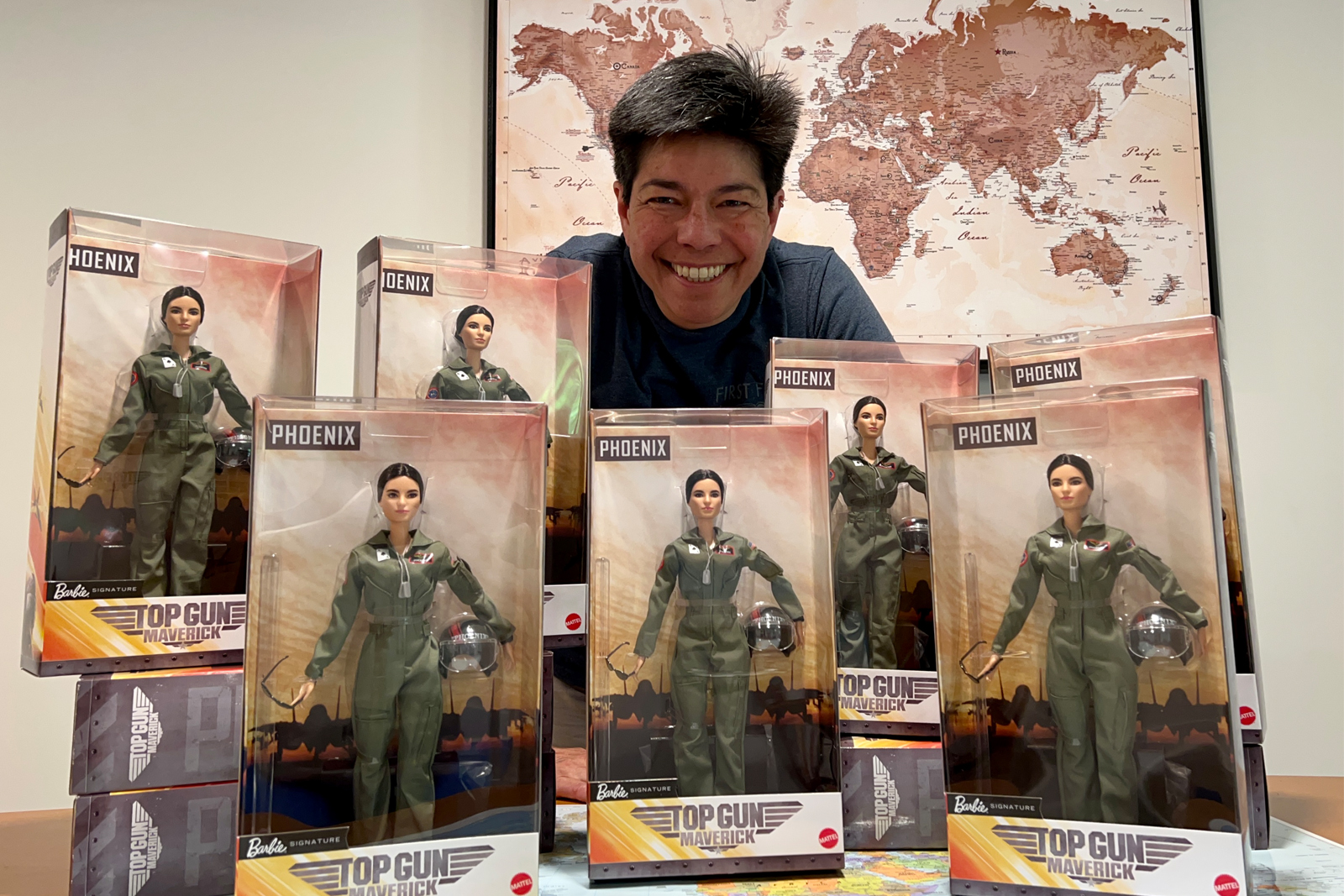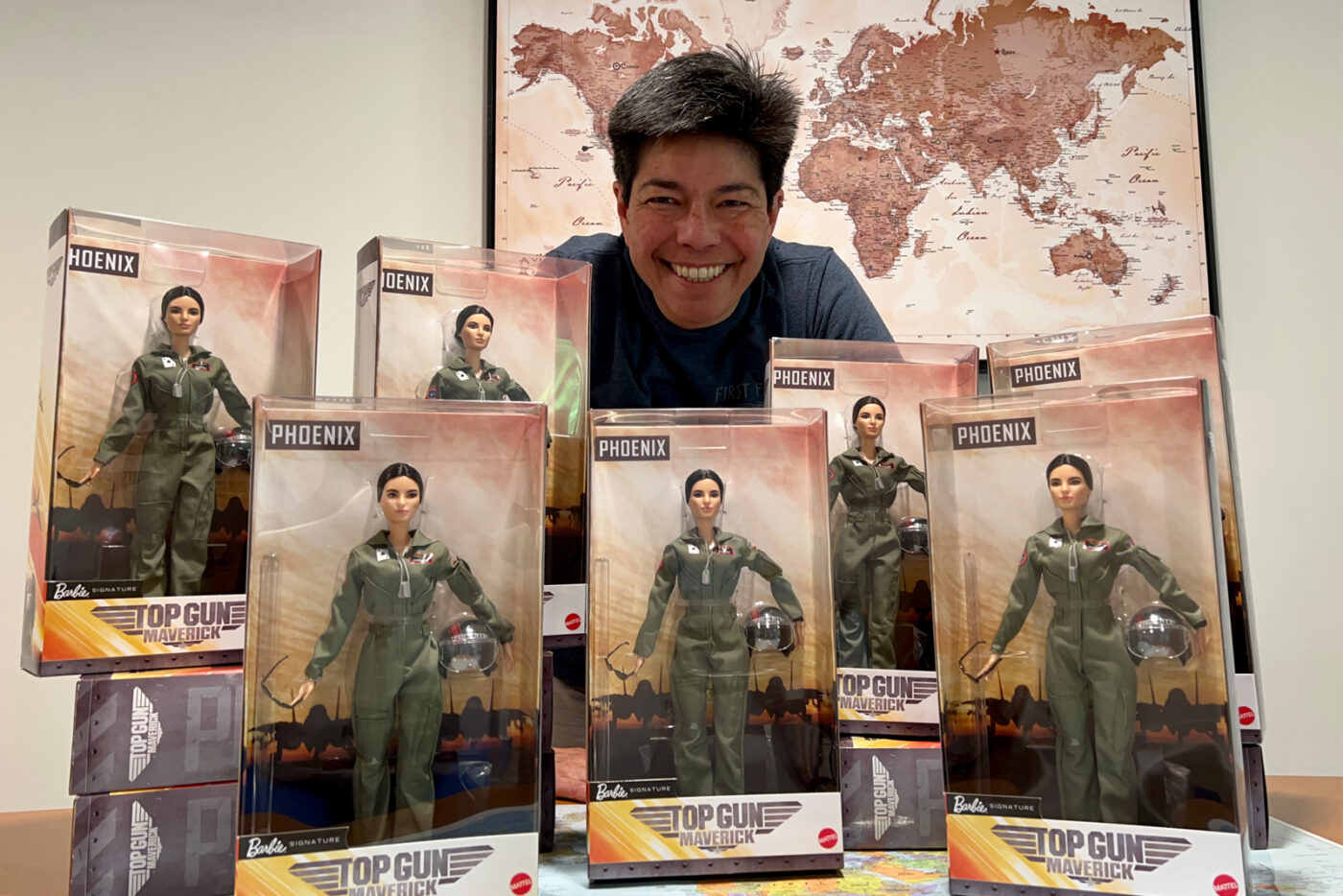Just Fly
Just be a good pilot.

A dimly-lit auditorium filled with electric murmurs of excitement. A title slide is projected onto the massive screen on the stage. A dial tone followed by the boop-boop-beep-boop of a phone call being placed blares through the auditorium speakers.
“Reese Air Force Base, this is Laughlin, do you copy?”
“Laughlin Air Force Base, this is Reese. We have you loud and clear, how me?”
“Loud and clear. Stand by for drop.”
Sounds like aircraft radio chatter before a bomb drop, but it’s nothing like that.
“Room! Ten HUT!”
Obedient military officers spring to their feet directly into the position of attention, eyes caged on the title slide, “Welcome to Undergraduate Pilot Training Class 95-04 Drop Night.”
The base commander strides down the auditorium aisle with great ceremony. He takes the stage, faces the crowd and gives us permission to “Be seated.” The military members take their seats in one unintentionally-synchronized movement. The family members making up the majority of the audience are confusedly trying to return to a seated position having just reactively stood up after the call to the attention which requires military members to rise when a senior officer enters the room.
Tonight is pilot training “drop night” which is a milestone event near the end of pilot training where the Air Force drops available planes and locations for the next graduating class. One list of all the planes the Air Force needs pilots for and the corresponding geographic location where those cockpits await. It’s like Fantasy Sports draft night with your Air Force career.
Having “won” the coin toss, our base, Laughlin Air Force Base in Texas, will start off the drop night. The highest-ranked student pilot in our class will get their pick of the list, followed by the highest-ranked student pilot at our sister training base, Reese Air Force Base in Oklahoma. Then the picks ping pong back and forth between our and Reese’s second highest-ranked, third highest-ranked etc etc etc.
In typical me fashion, I’m neither first nor last in my class. I hold a steady position just above the middle spot in my class standing. This means I need a list. So in my sweaty, shaky hands, I hold the entire drop. I’ve spent hours poring over the list, ruling out the planes I either didn’t want to fly or I knew would be gone by the time I stood up to make my pick then re-writing the list in the order of the planes I wanted.
There is one line item on our drop list that reads, “C-27A with C-5 follow-on.” Two planes means two consecutive assignments. It also means the first plane is a support aircraft and not a major weapon system. The C indicates that the plane is a cargo carrier. Most people are familiar with the more common C-prefix planes like the massive C-5 or the VIP transport C-21, but the C-27A is not a known quantity to most people in my class. I, however, have known about the C-27A for a couple of years and am actually very surprised to see it in our drop.
The Air Force only owns 10 of these Italian-made turboprop planes and they’re all located at a base in Panama. The C-27A mission is short-field take-offs and landings down in Central and South America, working with the Drug Enforcement Agency in the war on drugs. The mission is cool, the location is tropical and the plane is unique.
Like a world series poker player, I keep a stoic face because the C-27A with a C-5 follow-on is my first choice.
I use my sweaty thumb to cover up my first, second and third choices on my list. Not that anyone can see because it’s dark in the auditorium. And not that anyone would look because they’re busy clamping down on their own lists with their sweaty hands. Nonetheless, I protect my preferences.
One by one, all the cool planes get selected by the first in my class, then the first in the class at Reese, then the second in my class, then the second in the class at Reese. On the screen at the front, the drop night scribe lines through planes on the list.
It’s almost time for me to stand up and announce my pick. I notice that the C-27A with C-5 follow-on is yet to be lined through. Most people don’t want to fly the massive C-5 if flying an attack aircraft like the A-10 or any supersonic fighter jet is an option. To most people in the Air Force, size doesn’t matter … speed does.
I hear people whispering about the C-27A. I clamp my thumb harder on my list as if to squash any interest in my first choice.
The emcee says, “Laughlin.”
It’s my turn.
I stand up. I verify the C-27A is still available on the master drop list on the screen.
It is.
I peel my thumb off my list to verify C-27A is still my first choice. The paper is blank. But the ink which has transferred to my sweaty thumb confirms my reversed choice, “A72-C.”
“Laughlin chooses C-27 with C-5 follow on.”
The assignment is mine.
After the requisite partying and celebrations, I call my mentor from college who first told me about the C-27A. He’s excited for the news, but for a different reason.
“You’ll be the first female to fly it!”
The C-27 on our assignment drop list flew under most student pilot’s radars. The fact that I’d be the first female to fly it flew under mine.
The ban on women in combat aircraft cockpits has only recently been lifted and the attention is on the first females in those fast-moving, bomb-dropping, gun-shooting planes. Another woman in the cockpit of a C prefix cargo carriers is not noteworthy. A first in the C-27A, the “Rudy” of the Air Force cargo carriers, is even less not noteworthy.
And without commencing a chicken or egg first debate, I don’t know if being the first female C-27 pilot wasn’t noteworthy because no one took note of it or if because no one took note of it, it wasn’t noteworthy.
In high school, I was the only female on the marching band snare line. I’m pretty sure I wasn’t the first girl on the drum line, but I have no idea because there was no pomp or circumstance about it. Just drumming. I flew under that radar too.
Even though I was flying under the radar as the Air Force’s first female C-27A pilot, my mentor’s attention to the fact got into my head.
In preparation for my assignment to Panama to join the C-27 squadron, I run through all sorts of scenarios. I prepare myself to be teased, hazed, or worse, shunned by the men. I envision their pissed-off attitude about the girl invading their boys’ club. I prepare rebuttals to their “girls can’t fly” arguments. For a fleeting moment, I even picture “No Girls Allowed” signs all over the squadron like it was some Little Rascals man cave.
What I did not prepare myself for was not having to rely on any of that preparation.
My initiation into the squadron involves no teasing, hazing or shunning. Just flying.
The boys in the club don't care about anatomy, they care about airmanship. They don’t care how you pee, they care how you crew. And maybe being unrecognized and uncelebrated as a first made that integration easier. Rather than worry about press junkets and photo shoots, I spent my time doing the very thing I was trained to do, not the thing that made me different.
And the ability to do that has been made possible by others who were unceremoniously and negatively recognized as firsts. Those who were different by whatever societal standard was the measuring stick of the moment. Those who looked, talked, prayed, loved or yes, peed differently than the rest. Theirs is a flight of perseverance, enduring turbulence in order to pave a smoother runway for those behind them. They believed in themselves, sometimes when absolutely no one else did.
We can’t control how the world judges us. Whether you’re the first of something or the only of something, what’s important is how you see and celebrate yourself. Confidence and competence can’t be outsourced. It comes from within you.
And I realize that more important than being the first female C-27A pilot is being remembered as a competent C-27A pilot.

